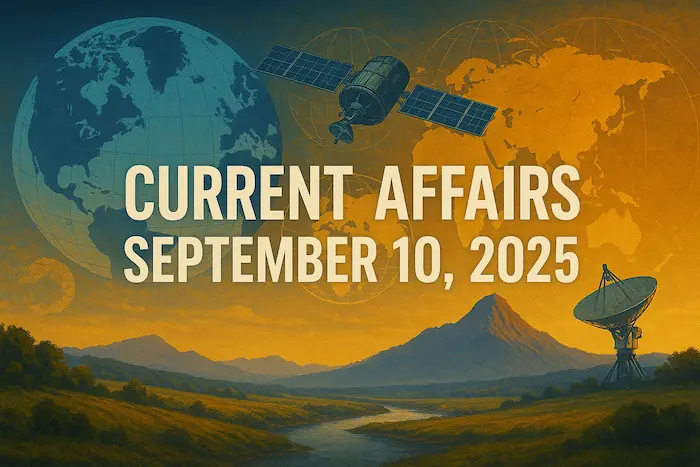1. Election of the Vice-President of India – Polity
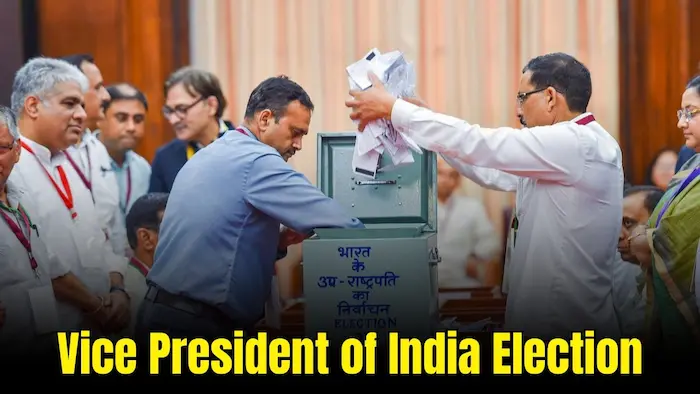
Why in News?
The Prime Minister cast his first vote in the recent Vice-Presidential elections, drawing attention to the constitutional importance and procedural uniqueness of this electoral process.
Constitutional Framework
- Article 66 of the Constitution governs the election of the Vice-President of India.
- The Vice-President holds the second-highest constitutional office in India after the President.
- Also acts as the ex-officio Chairman of the Rajya Sabha, India’s upper house of Parliament.
Qualifications to be Vice-President
According to the Constitution and the Representation of the People Act:
- Must be a citizen of India.
- Must be at least 35 years old.
- Must be qualified for election to the Rajya Sabha.
- Must not hold any office of profit under the Government of India or any State Government.
Election Procedure
- Elected by an electoral college composed of:
- 543 Lok Sabha MPs
- 233 elected Rajya Sabha MPs
- 12 nominated Rajya Sabha members
- Nominated members of State Legislative Assemblies do not participate.
Voting System:
- Proportional representation by means of Single Transferable Vote (STV).
- Voting is by secret ballot.
- No party whip is allowed – MPs vote according to their conscience.
- Majority requirement: The candidate must secure 50% of valid votes + 1.
Conduct of Election:
- Supervised by the Election Commission of India.
- Secretary-General of Lok Sabha or Rajya Sabha acts as the Returning Officer.
Roles and Responsibilities
- Presides over Rajya Sabha proceedings.
- Ensures discipline and order in the Upper House.
- Refers Money Bills to the Speaker of Lok Sabha for certification.
- Has no executive powers, unless performing duties as acting President.
Resignation and Removal
- As per Article 67(a):
- The Vice-President can resign by writing to the President.
- Resignation is effective immediately, no parliamentary approval needed.
- There is no provision for an acting Vice-President.
- In absence, the Deputy Chairman of Rajya Sabha presides.
Removal Process:
- Requires a 14-day notice in writing.
- Must be passed by:
- Effective majority (majority of all then members) in Rajya Sabha.
- Simple majority in Lok Sabha.
- Article 122 provides judicial immunity to parliamentary procedures, meaning courts cannot challenge the removal process.
Significance in Indian Polity
- Ensures continuity and stability in parliamentary functions.
- As presiding officer of Rajya Sabha, the VP plays a vital role in maintaining legislative balance.
- Though largely a ceremonial role, its importance during political crises (e.g., as acting President) cannot be ignored.
- No Vice-President has ever been removed – indicating political consensus and stability around the office.
Exam Connect – Possible Questions
Prelims
1. Which of the following statements about the Vice-President of India is/are correct?
1.The Vice-President is elected by members of both Parliament and State Legislatures.
2. The Vice-President must be eligible for election to the Rajya Sabha.
3. Voting in the Vice-Presidential election is by open ballot.
A.1 and 2 only
B.2 only
C.1 and 3 only
D. 2 and 3 only
Answer: B. 2 only
2. Which Article of the Constitution deals with the election of the Vice-President of India?
A. Article 62
B. Article 66
C. Article 72
D. Article 76
Answer: B. Article 66
Mains
1. Examine the role and significance of the Vice-President of India in the functioning of the Indian parliamentary system. How is this position different from that of the President?
2. Discuss the election procedure and removal mechanism of the Vice-President of India. What does the stability of this office indicate about Indian democracy?
2. SC Clarifies Aadhaar Establishes Identity, Not Citizenship – Polity
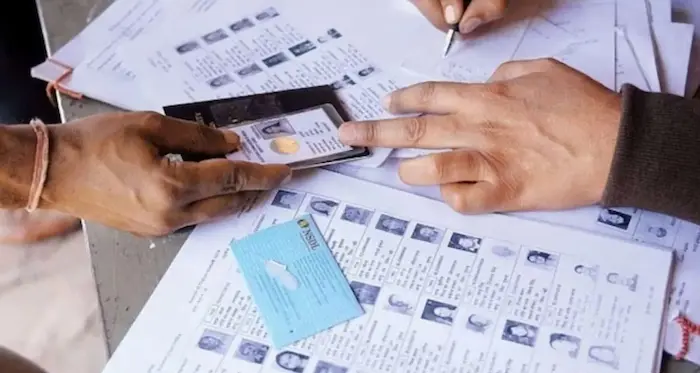
Why in News?
The Supreme Court of India has directed the Election Commission (EC) to recognize Aadhaar as the 12th valid identity document for Bihar’s Special Intensive Revision (SIR) of electoral rolls.
The court clarified that Aadhaar can establish identity but not citizenship, a distinction that holds major implications for voter roll inclusion and deletion processes.
Key Takeaways
- Aadhaar now valid for voter identity in Bihar’s voter roll revision.
- However, Aadhaar cannot be used to prove citizenship.
- The Election Commission must verify Aadhaar authenticity before accepting it for electoral enrollment.
- The case could influence electoral roll processes nationwide, especially ahead of SIR 2026.
Background Context
What is Aadhaar?
- A 12-digit unique identity number issued by the UIDAI to Indian residents.
- Based on biometric and demographic data.
- Aadhaar is not proof of citizenship, as it may also be issued to long-term residents or even foreigners living in India.
Voter ID vs Aadhaar:
- Voter ID (EPIC) is issued by the Election Commission to Indian citizens only.
- Aadhaar proves identity and residence, not nationality.
SC’s Clarification: Aadhaar ≠ Citizenship
- The Court emphasized: “While Aadhaar can verify a person’s identity and residence, it does not confirm Indian citizenship.”
- This protects the sanctity of voter rolls, ensuring only citizens can vote.
- Booth Level Officers (BLOs) can verify identity/residence, but not citizenship.
Role of the Election Commission
- EC must verify Aadhaar details before accepting them for inclusion.
- Aadhaar’s use aims to include genuine voters, especially those without traditional ID.
- Political parties have been asked to assist voters at risk of exclusion.
Citizenship Verification
- Can only be confirmed by documents such as:
- Birth certificate
- Passport
- Citizenship/naturalisation certificate
- The central government alone has the power to determine citizenship status.
Wider Significance
- Bihar’s SIR is one of the largest voter roll revisions, covering 7.24 crore voters.
- The 2026 nationwide SIR will likely follow this precedent.
- This case raises unresolved legal questions:
- Can the Election Commission determine citizenship?
- How should voter inclusion/exclusion be handled in regions with migrant populations?
Exam Connect – Possible Questions
Prelims
1. Which of the following statements is/are correct regarding Aadhaar and citizenship?
1.Aadhaar can be used as valid proof of Indian citizenship.
2. Aadhaar is issued by UIDAI and can be held by non-citizens.
3. The Election Commission has constitutional authority to determine citizenship.
A.1 and 3 only
B.2 only
C.1 and 2 only
D. 2 and 3 only
Answer: B. 2 only
2. Which document is NOT sufficient by itself to prove Indian citizenship for electoral roll inclusion?
A. Birth Certificate
B. Passport
C. Aadhaar Card
D. Naturalization Certificate
Answer: C. Aadhaar Card
Mains
1. The Supreme Court recently ruled that Aadhaar can establish identity but not citizenship. Discuss the implications of this ruling for India’s electoral process, particularly in light of the upcoming nationwide Special Intensive Revision of electoral rolls.
2. Critically evaluate the role of the Election Commission in verifying voter eligibility in India. Should the EC be empowered to determine citizenship status? Justify your answer with reference to recent judicial interpretations.
3. MHA’s Twin Decisions and Their Impact on Manipur – Governance
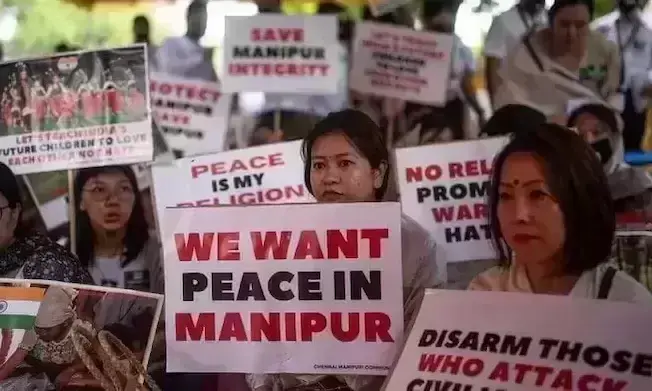
Why in News?
Ahead of Prime Minister Modi’s visit to Manipur, the Ministry of Home Affairs (MHA) announced two key decisions to address the ongoing ethnic unrest in the state:
- Renewal of the Suspension of Operations (SoO) agreement with Kuki insurgent groups under KNO and UPF.
- Agreement with Kuki-Zo Council to reopen National Highway-02, a key route for essential goods and civilian movement.
These measures are intended to ease ethnic tensions that have persisted since May 2023, especially between the Meitei and Kuki-Zo communities.
Key Takeaways
- SoO agreement renewed with renegotiated terms to reduce militant activities and maintain Manipur’s territorial integrity.
- National Highway-02 (NH-02) to be reopened for smoother movement of supplies and civilians.
- The Centre is trying to balance peace negotiations with militant groups while maintaining law and order.
- The move follows the imposition of President’s Rule in the state, replacing the BJP-led state government.
Background: Manipur’s Ethnic Conflict (Since 2023)
- Triggered by land rights issues, reservation demands, and allegations of political partisanship.
- Violent clashes erupted between the Meiteis (dominant in the valley) and Kuki-Zo groups (inhabiting hill areas).
- The violence led to displacement, road blockades, and breakdown of governance in certain districts.
Suspension of Operations (SoO) Agreement
What is the SoO Agreement?
- A tripartite ceasefire agreement signed in 2008 between:
- Government of India
- Government of Manipur
- Kuki insurgent groups under KNO and UPF.
- Objective: Facilitate political dialogue by suspending armed operations.
Why Was It Withdrawn in 2023?
- The Manipur government accused Kuki groups of violating the terms and fueling unrest.
- SoO was suspended unilaterally by the state government under CM Biren Singh.
Renegotiated Terms of SoO (2025)
- Kuki militant groups must:
- Respect Manipur’s territorial integrity.
- Seek a negotiated political solution.
- Other conditions:
- Relocate camps from Meitei-dominated areas (7 key camps).
- Merge small camps into larger ones for better oversight.
- Deposit weapons with CRPF/BSF to prevent misuse.
- Monitor cadre movements, with verification.
- Direct bank transfer of salaries to reduce fund misuse.
- Formation of a Joint Monitoring Group for enforcement.
Reopening of NH-02: A Symbolic Move
- NH-02 is a lifeline connecting Imphal (Meitei-majority) to Kuki-Zo regions and Nagaland.
- The MHA claimed it had reached an agreement for “free movement”, but:
- Kuki-Zo groups disputed this, stating:
- Supplies were already moving.
- ‘Free movement’ remains undefined.
- Cooperation with security forces does not imply unrestricted access to Meiteis.
- Kuki-Zo groups disputed this, stating:
Government’s Broader Strategy
- Addressing Kuki demands, including removal of CM Biren Singh, has been initiated.
- Peace pacts with Meitei insurgents (like UNLF) also signed to reduce multi-front violence.
- President’s Rule enabled the Centre to centralize control and negotiate directly.
Mixed Reactions and Political Implications
- Kuki-Zo groups criticize the reaffirmation of territorial integrity, which conflicts with their demand for separate administration.
- Meitei groups fear that SoO renewal legitimizes armed Kuki groups.
- MHA’s efforts seen as balancing short-term peace with long-term political risks.
Exam Connect – Possible Questions
Prelims
1. The Suspension of Operations (SoO) agreement is a:
A.Tripartite peace treaty between India, Myanmar, and China
B. Ceasefire agreement between Government and Naxalite groups
C. Agreement between Government of India, State Government, and insurgent groups
D. Special provision under Article 371C
Answer: C. Agreement between Government of India, State Government, and insurgent groups
2. Which of the following statements is/are correct about the NH-02 in Manipur?
1.It is a key highway connecting Imphal to Kuki-dominated hill areas.
2.It is under the jurisdiction of the Border Roads Organisation.
3. The highway was fully operational during the 2023 ethnic conflict.
A.1 only
B.1 and 2 only
C. 2 and 3 only
D.1 and 3 only
Answer: A. 1 only
Mains
1. Discuss the significance and challenges of the Suspension of Operations (SoO) agreement in restoring peace in conflict-ridden regions like Manipur. Evaluate the role of the central government in such ceasefire mechanisms.
2. Ethnic unrest in Manipur has highlighted the complexities of centre-state relations in conflict zones. Examine how governance strategies must adapt to manage ethnic diversity and insurgency within the framework of the Indian Constitution.
4.WHO’s Model List of Essential Medicines (EML) – Inclusion of Semaglutide – International Relations

Why in News?
The World Health Organization (WHO) has included Semaglutide in its 24th Model List of Essential Medicines (EML). Originally developed for type 2 diabetes, the drug is now also recognized for its significant impact on weight loss, particularly in combating obesity.
This inclusion is a major global health decision, especially for countries like India, which face rising burdens of diabetes and obesity.
Key Takeaways
- Semaglutide is a GLP-1 receptor agonist, primarily used for type 2 diabetes.
- It also suppresses appetite, aids in weight loss, and slows gastric emptying.
- Known brand names:
- Ozempic – for diabetes
- Wegovy – for obesity
- Its inclusion in the WHO’s EML aims to:
- Improve global access
- Make it affordable
- Recognize its dual benefit in managing diabetes and obesity
What is WHO’s Model List of Essential Medicines (EML)?
Purpose & History:
- First published in 1977 to promote equitable access to medicines in low- and middle-income countries.
- Updated every two years by a WHO Expert Committee.
Structure of EML:
- Core List:
- Includes medicines for basic health systems.
- Requires minimal infrastructure and training.
- Complementary List:
- Includes medicines that need specialized care or equipment.
- May be costlier or require monitoring.
Selection Criteria:
- Public health relevance
- Proven efficacy and safety
- Cost-effectiveness
- Preference for single compound medicines (unless combinations are clearly better)
Global Impact:
- Used by 150+ countries to:
- Design National Essential Medicines Lists (NEMLs)
- Plan procurement and supply
- Implement Universal Health Coverage (UHC) policies
Significance of Including Semaglutide
For Global Health:
- Recognizes obesity as a serious global health issue.
- Encourages countries to prioritize obesity treatment in public health planning.
- Helps make Semaglutide more accessible and affordable, especially in low- and middle-income countries (LMICs).
For India:
- India has:
- Over 100 million diabetics
- Rising rates of obesity, even in rural areas
- Inclusion of Semaglutide in national schemes (e.g., Jan Aushadhi, Ayushman Bharat) could:
- Improve public health outcomes
- Reduce long-term healthcare costs
- Prevent complications like heart disease, kidney failure, and stroke
Challenges in Implementation
- Affordability: Semaglutide remains expensive in Indian retail markets.
- Manufacturing & Licensing: Need for local production or generic versions.
- Prescription & Monitoring: Requires trained professionals for safe administration.
- Risk of misuse: Growing global black-market demand for weight-loss drugs could lead to diversion and overuse.
Way Forward
- Domestic policy alignment with WHO’s EML to include Semaglutide in India’s National List of Essential Medicines (NLEM).
- Promote generic drug manufacturing under schemes like Make in India and Pharma Vision 2047.
- Strengthen public healthcare infrastructure to integrate obesity treatment protocols.
- Regulate marketing to prevent misuse of Semaglutide as a “quick fix” for cosmetic weight loss.
Exam Connect – Possible Questions
Prelims
1. Which of the following is true regarding the WHO’s Model List of Essential Medicines (EML)?
1. It is legally binding for member countries to follow.
2. It is updated annually.
3. It includes both core and complementary lists.
4. Its main aim is to promote access to effective and affordable medicines.
A.1, 2, and 4 only
B. 2 and 3 only
C.3 and 4 only
D.1 and 3 only
Answer: C. 3 and 4 only
2. Semaglutide, recently included in WHO’s EML, is primarily used to treat:
A.Tuberculosis
B. Type 2 Diabetes and Obesity
C. Malaria and Dengue
D. COVID-19
Answer: B. Type 2 Diabetes and Obesity
Mains
1. Discuss the significance of the WHO’s Model List of Essential Medicines (EML) in shaping national health policies. How can India leverage the inclusion of Semaglutide in the EML to tackle its growing burden of diabetes and obesity?
2. Obesity is emerging as a major non-communicable disease (NCD) concern in India. Examine the challenges and opportunities of integrating anti-obesity drugs like Semaglutide into India’s public health system.
5. Global Capability Centres (GCCs) in India – Opportunities and Challenges – Economy
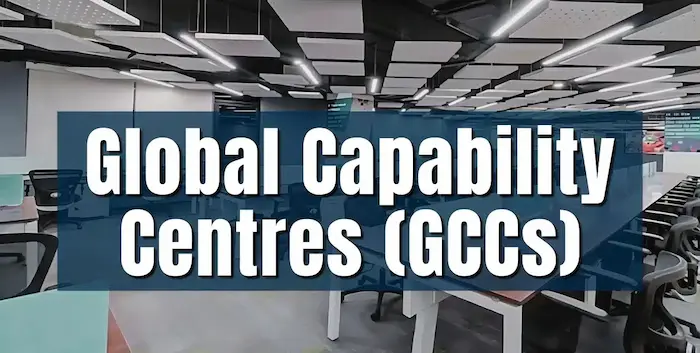
Why in News?
India has emerged as a global hub for Global Capability Centres (GCCs), with over 1,600 centres established by multinational corporations (MNCs). While GCCs contribute significantly to employment and service exports, there is growing debate about their long-term impact on the domestic IT industry, innovation ecosystem, and intellectual property (IP) generation.
What are GCCs? – Definition and Role
- Global Capability Centres (GCCs) are fully-owned offshore units of multinational corporations, established in cost-effective, talent-rich countries.
- Initially focused on back-office operations, GCCs now provide core business services, including:
- IT services
- Finance & Accounting
- R&D
- Engineering
- Customer support
- Data analytics and digital transformation
Key Difference from Traditional IT Outsourcing:
Unlike outsourced firms, GCCs are in-house centres that directly serve their parent company’s strategic needs.
Current Landscape of GCCs in India (as of 2024)
| Metric | Status |
|---|---|
| Number of GCCs | ~1,600 |
| Employment | ~1.9 million professionals |
| Revenue | $64.6 billion |
| Major Hubs | Bengaluru, Hyderabad, Pune, Chennai, NCR |
- India houses GCCs for major MNCs like Google, Microsoft, J.P. Morgan, Shell, Siemens, and Walmart.
Growth Projections & Economic Significance
- Projected to reach $105 billion by 2030.
- Expected to employ 2.5 million+ professionals.
- Major contributor to India’s service exports and urban employment.
- Drives demand for high-end office spaces, local startups, and digital infrastructure.
Key Drivers of GCC Growth in India
- Talent Pool – India produces over 1 million engineering graduates annually.
- Cost Advantage – Operating cost is 30–40% lower than in developed countries.
- Digital Push – GCCs benefit from India’s growing digital economy.
- Stable Regulatory Ecosystem – Encourages FDI in services and tech infrastructure.
- Government Incentives – Special Economic Zones (SEZs), Startup India, and R&D policies.
Challenges and Concerns
1. Overlap with IT Services Sector
- GCCs are internal alternatives to outsourcing; may reduce business for Indian IT giants like TCS, Infosys.
2. Limited Intellectual Property Creation
- Most GCCs don’t own patents; IP is retained by parent MNCs abroad.
3. Job Quality & Automation Risks
- Some GCCs offer low-value, repetitive roles.
- Rising adoption of AI tools threatens manual processes and mid-level jobs.
4. Concentration in Urban Areas
- Benefits are clustered in metro cities, leading to regional imbalances in employment and investment.
Government’s Response and Way Forward
- Promoting IP Localization
- Policies encouraging patent filing in India and local IP ownership.
- Encouraging R&D and Innovation
- Push for GCCs to invest in deep tech, AI, product development.
- Improving Quality of Work
- Incentivizing high-value work over mere cost arbitrage.
- Policy Push for Tier-2 Cities
- Spreading GCC benefits beyond metros to reduce regional disparities.
Conclusion
India’s transition from a cost-based service provider to a global innovation hub depends on how well it leverages the GCC ecosystem.
If nurtured properly, GCCs can drive innovation, skill development, and economic growth, but policy support, IP localization, and R&D investment are critical for ensuring long-term benefits.
Exam Connect – Possible Questions
Prelims
1. Which of the following correctly describes Global Capability Centres (GCCs)?
A. They are offshore outsourcing firms providing services to multiple clients.
B.They are wholly-owned offshore units of MNCs performing core and support functions.
C. They are autonomous innovation centres set up by Indian start-ups.
D. They are public sector institutions for R&D funded by the government.
Answer: B. They are wholly-owned offshore units of MNCs performing core and support functions.
2. Which of the following is NOT a challenge related to the GCC ecosystem in India?
A. Regional concentration in metros
B. Potential decline in FDI inflows
C. Limited IP creation and ownership
D.Job displacement due to automation
Answer: B. Potential decline in FDI inflows
Mains
1.Global Capability Centres (GCCs) are rapidly transforming India into a strategic innovation hub. Discuss the opportunities they present for India’s economy and the policy challenges that must be addressed to maximize their benefits.
2. Critically evaluate the impact of Global Capability Centres (GCCs) on India’s IT services sector. How can India balance the growth of GCCs with the interests of domestic service providers and innovators?
6. Ranking Pitfalls – India Rankings 2025 and the NIRF Framework – Indian Society
Why in News?
The release of the India Rankings 2025 under the National Institutional Ranking Framework (NIRF) has sparked debate over the methodological flaws in the assessment of higher education institutions in India.
Despite growing in scale and participation—from 3,565 institutions in 2016 to 14,163 in 2025, and expanding from 4 to 17 categories—the NIRF rankings have been criticized for bias, lack of inclusivity, and an overemphasis on institutional reputation.
Key Takeaways
- Legacy public institutions continue to dominate the rankings.
- Ranking methodology is skewed by subjective peer perception, and fails to fully measure inclusivity and equity.
- Disadvantaged groups such as SC, ST, and OBC students are not adequately represented or considered in metrics.
- The Education Minister has flagged the urban bias in peer perception and questioned the framework’s reliability.
Understanding the NIRF Framework
Launched in 2016, the NIRF is the official national ranking system for higher educational institutions in India, overseen by the Ministry of Education.
NIRF Parameters and Weightage
| Parameter | Weightage |
|---|---|
| Teaching, Learning & Resources (TLR) | 30% |
| Research & Professional Practice (RP) | 30% |
| Graduation Outcomes (GO) | 20% |
| Outreach & Inclusivity (OI) | 10% |
| Peer Perception (PR) | 10% |
Major Issues with the NIRF Rankings
1. Over-Reliance on Peer Perception
- 10% weightage is given to subjective “reputation surveys”.
- Tends to favor older, metro-based institutions, penalizing new or rural colleges.
- Lacks transparency and replicability.
2. Inadequate Inclusivity Metrics
- The Outreach & Inclusivity (OI) criterion does not sufficiently capture:
- Representation of SC/ST/OBC and women
- Support for PwD (Persons with Disabilities)
- Socio-economic backgrounds of students
- Institutions with token representation may still score high.
3. Self-Declared Data
- Most data submitted by institutions is not externally verified.
- Increases risk of data manipulation or inflation.
4. Bibliometric Limitations
- Focuses on research output indexed in English-language global journals.
- Overlooks regional languages, social impact research, or policy contributions.
Broader Implications for Indian Society
- Reinforces elitism in higher education.
- Undermines efforts to democratize access to quality education.
- Disincentivizes new, rural, or socially inclusive institutions from competing fairly.
What Needs to Change? – A Way Forward
- Reform the Peer Perception Parameter:
- Replace or reduce weightage; include student feedback, employer data, or community engagement.
- Incentivize Inclusivity:
- Increase focus on reservation implementation, scholarship support, and diversity metrics.
- Third-party Data Audits:
- Make data submission more transparent and verifiable.
- Incorporate Social Impact Metrics:
- Value institutions making policy contributions, local innovations, and social development initiatives.
- Transform Rankings into Reform Tools:
- Use rankings to drive policy decisions, funding, and institutional improvement, not just prestige.
Exam Connect – Possible Questions
Prelims
1. Which of the following is NOT one of the parameters used by the NIRF rankings?
A.Teaching, Learning, and Resources
B. Research and Professional Practice
C. Environmental Sustainability and Green Rating
D. Outreach and Inclusivity
Answer: C. Environmental Sustainability and Green Rating
2. What is the weightage assigned to ‘Peer Perception’ in the NIRF rankings?
A. 5%
B. 10%
C. 15%
D. 20%
Answer: B. 10%
Mains
1. Critically examine the role of the NIRF rankings in shaping India’s higher education landscape. How can the ranking framework be made more inclusive and socially responsive?
2. Do national ranking systems like NIRF promote equity in access to quality higher education? Suggest reforms to ensure that institutional rankings contribute to inclusive growth and educational justice.
7. India-Iran Relations – Ancient Civilisations and New Horizons – International Relations
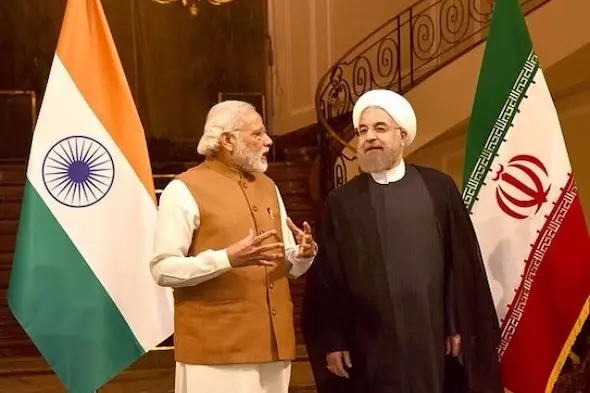
Why in News?
Amidst the decline of the Western-led global order, there is growing emphasis on civilisational partnerships, particularly between India and Iran, two ancient nations with shared histories, values, and geopolitical interests.
As Western institutions face a legitimacy crisis—with rising trade wars, violations of international law, and eroding multilateralism—nations like India and Iran are poised to play a greater role in reshaping global governance.
Key Takeaways
- The weakening of Western dominance opens space for civilisational states to assert new models of international cooperation.
- India and Iran are deep-rooted cultures with common experiences of resilience, resistance to colonialism, and cultural diplomacy.
- Emerging platforms like BRICS and the International North-South Transport Corridor (INSTC) demonstrate their joint efforts to build a multipolar world.
- India and Iran share a vision of global justice, sovereign equality, and respect for human dignity.
Understanding the Global Context
1. Crisis in the Western-led Order
- US and its allies are facing pushback due to:
- Unilateral sanctions
- Selective application of international law
- Trade protectionism
- Failure to reform global institutions (e.g., UNSC, WTO, IMF)
2. Rise of the Global South
- The Global South refers to developing countries asserting policy independence, technological sovereignty, and alternative developmental models.
- Palestinian struggle, for example, reflects the resistance narrative central to Global South diplomacy.
- India and Iran represent this shift through civilisational diplomacy rather than ideological or purely economic blocs.
India-Iran Relations: Historical and Cultural Foundations
Ancient Ties:
- Cultural exchanges dating back to the Indus Valley and Persian Empire.
- Influence in language (Farsi-Urdu), art, architecture, and Islamic scholarship.
- Shared contributions to philosophy, statecraft, and literature.
Modern Strategic Cooperation:
- Collaboration on energy security (oil, gas)
- Joint work on regional stability in Afghanistan and Central Asia
- Importance of Chabahar Port for regional connectivity
Key Strategic Initiatives
1. International North-South Transport Corridor (INSTC):
- A multi-modal transport route linking India–Iran–Central Asia–Russia–Europe.
- Reduces time and cost of trade.
- Enhances India’s access to Eurasia and counters China’s BRI.
2. BRICS+ Expansion:
- Iran is now a member of BRICS+, where India plays a major role.
- BRICS provides an alternative to Western-led economic groupings (G7, OECD).
3. Chabahar Port:
- India is developing Chabahar as a strategic maritime hub.
- Serves as a gateway to Afghanistan and Central Asia bypassing Pakistan.
Challenges in the Relationship
| Challenge | Description |
|---|---|
| US Sanctions on Iran | Limits banking, oil trade, and investment from India. |
| Geopolitical Pressures | India balancing ties with US, Israel, and Iran. |
| Instability in West Asia | Impacts long-term strategic projects like INSTC. |
| Iran’s Regional Tensions | With countries like Saudi Arabia, complicates India’s regional diplomacy. |
Opportunities for India
- Energy Security: Iran’s oil and gas reserves are vital for India’s long-term needs.
- Strategic Autonomy: Working with Iran enhances India’s independent foreign policy.
- Multipolar World Order: Collaboration supports equitable global governance.
- Cultural Diplomacy: India’s “civilisational connect” with Iran helps build soft power and regional goodwill.
Conclusion
India and Iran, as ancient civilisations, have much to offer the emerging post-Western international order. Their cooperation in infrastructure, trade, energy, and global governance can help redefine diplomacy based on justice, equality, and cultural heritage. The civilisational lens, rather than a purely geopolitical one, may shape a more inclusive and stable global future.
Exam Connect – Possible Questions
Prelims
1. Which of the following correctly describes the International North-South Transport Corridor (INSTC)?
A. A maritime project between India and ASEAN countries
B. A railway project connecting India and Nepal
C. A multimodal transport network linking India to Europe via Iran and Central Asia
D. An energy pipeline between India and Iran
Answer: C. A multimodal transport network linking India to Europe via Iran and Central Asia
2. Iran is a recent member of which international grouping that also includes India?
A. ASEAN
B. BRICS+
C. BIMSTEC
D. SCO
Answer: B. BRICS+
Mains
1. In light of the decline of the Western-led global order, examine how India and Iran can collaborate as ancient civilisations to build a more inclusive and equitable world order. Discuss with reference to BRICS and the INSTC
2. Discuss the strategic and cultural dimensions of India-Iran relations. What are the key opportunities and challenges in leveraging this partnership for India’s broader foreign policy objectives?

